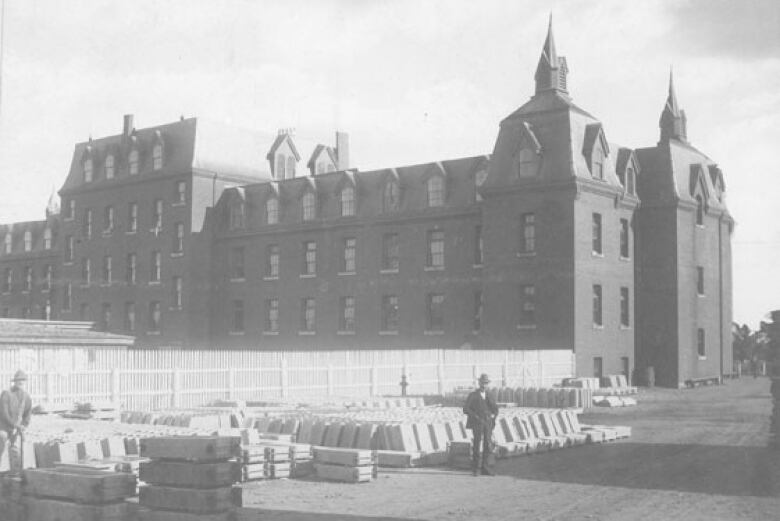Neglect, corruption and the history behind Halifax's deadliest fire
134 years after fire, book looks at the furious public outcry that followed and the corruption in the city

The devastating fire broke out just before midnight at a Halifax institution, consuming everything in its path and taking the lives of 30 vulnerable people who had been asleep in their beds.
More than a century later, a local author is delving into the shady history of the Halifax Poor House fire, which remainsthe deadliest blaze to everoccur in the city.
The victims were among the institution'smost defenseless residents the elderly, the infirm, the mentally ill who werehoused on the fifth floor of the building's centre block, accessible by a single staircase,when the fire broke out on Nov. 6, 1882.
It was very easy to be trapped, which is exactly what happened.- Steven Laffoley
"Many of those on that hospital wing were bedridden and were unable to get up themselves, or were so delusional from their illness that they wouldn't necessarily have understood what was happening," saidSteven Laffoley, author ofThe Halifax Poor House Fire, A Victorian Tragedy.
"It was very easy to be trapped, which is exactly what happened."
Institution destroyed
Laffoley'sbookexploresthe fire, the furious public outcry that followed, the investigation and the "shadowy biaswoven into the fabric of the city" that let those responsible for the deaths get off scot-free.
Nearly 400 people, so-called "inmates," were sleeping in the hugeVictorian structure when flamestore though the building.
Fire burned the building to the ground, taking with it thosewho could not escape on their own.
"There were no social services provided for people back then," Laffoley, headmaster at the Halifax Grammar School,told CBC's Information Morning. "The poor house was a convention brought over from England. It existed for hundreds of years and developed in order to take care of those who were poor or mentally ill or aged.
"Otherwise there was no place for them to go."

Poor house the only option for some
The Halifax Poor House stood where the IWK now stands at the corner of Robie and South streets in the city's south end.
In that time, people ended up there voluntarily, with nowhere else to turn.
"Your options at that point became very limited," said Laffoley, adding that the alternative was often being jailed.
"Prison was likely the next step because in order to feed yourself,you would end up stealing. You just have people who were unable to take care of themselves and had a 'choice' to go into the poor house."
Most vulnerable trapped
Once inside the poor house, men were separated from women and children, and all were put to work.
"Once installed as an inmate you would begin a very rigorous day-by-day existence where you were up early, you were off to breakfast and from there you did whatever work was provided," said Laffoley.
People with so-called "mild" cases of mental or physical illness would be dispersed through the regular population, he said. The most seriously ill ended up on the fifth floor of the centre block, which became the site of 30 deaths.
Some estimates put the number of deaths at 31, but Laffoley said that was due to inaccurate media reports at the time. One person who was thought to be dead actually wasn't in the building when it burned and survived, he said.

Disparity between rich and poor grows again
The institution was chronically underfunded, said Laffoley, with "heavy suspicion" of corruption and ineptitude amongmanagers.
"Yet the conclusion of the inquest was that no one was to blame for the fire.That was the part that I found most distressing and why I undertook this story I reach some very pointed conclusions on that point of blame," he said.
Yet the conclusion of the inquest was that no one was to blame for the fire.- Steven Laffoley
"I wanted to do this project to show the similarities between the Halifax of the 1880s and what's happening in our community now how we're seeing a growing and vast disparity between rich and poor, and what happens to an entire class of people when cast as the other."
After the fire, a replacement for the poor house went up on the same spot. In 1958 the building became known as the City Home.
Laffoley said it remained a hospital for people with mental illness until the Abbey Lane facility was built in the early 1970s and the City Home was torn down.
With files from Information Morning












_(720p).jpg)


 OFFICIAL HD MUSIC VIDEO.jpg)
.jpg)



























































































